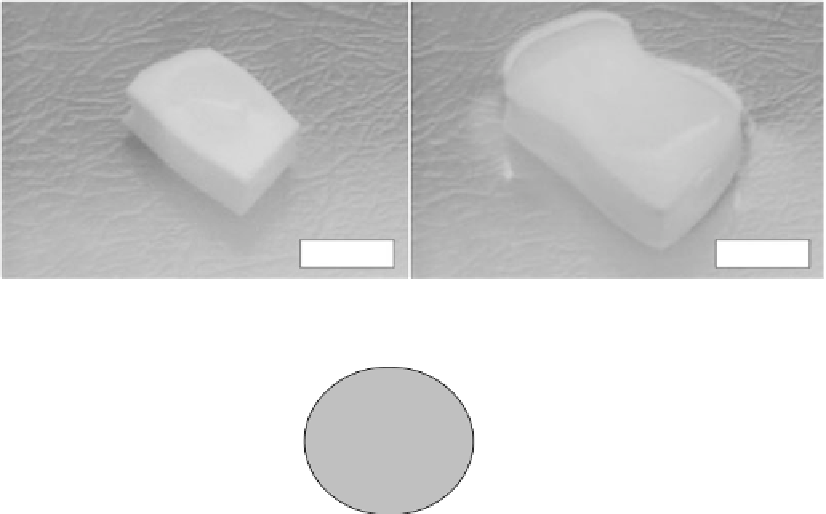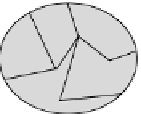Biomedical Engineering Reference
In-Depth Information
25
°
C
50
°
C
FIGURE 16.3
Thermal activation of a shape memory gel.
Air
Water
Organic
solvent
Gel
Air
Water
Organic
solvent
Direction
of motion
Gel
FIGURE 16.4
Spontaneous gel motion in water due to a spreading process of organic solvent.
ascribed to spatio temporal pH gradients generated by electrode reactions, which propagate inside
the gel by electrodiffusion. In fact, this can cause mechanical rearrangements of the gel network by
changes in the statistical length of the polymer chains [17].
Different types of devices have been proposed so far by exploiting such phenomena with different
actuating confi gurations. Films, strips, membranes, and fi b e r s a r e s of m e e x a m p fi e s of fi c of n s fi d e r e d s h a p e s .
A signifi cant example of application is represented by an electrically activated “chemical valve”
membrane, capable of reversibly expanding and contracting its pore size in response to electrical
stimuli [18]. In particular, by keeping the membrane dimensions constant, the contractile stress gener-
ated by the electrochemomechanical changes in the membrane expands its pore channels, permeable
to solutes and solvent. Variable potential differences can therefore be used to electrically modulate
the membrane permeability. Accordingly, such a type of system could be used as a permeation-
selective membrane, continuously separating mixture of solutes with different molecular sizes.
One of the most important areas of biomedical application of polymer gels is represented by the
controlled release of drugs. The purpose behind controlling a drug delivery is to achieve more effec-
tive therapies by eliminating the risk for under- or overdosing. In particular, controlled-delivery
systems are intended to maintain drug levels within a desired range, with a delivery profi le yielding
a suitable blood level of the drug over long periods of time. In fact, with traditional administration of

















